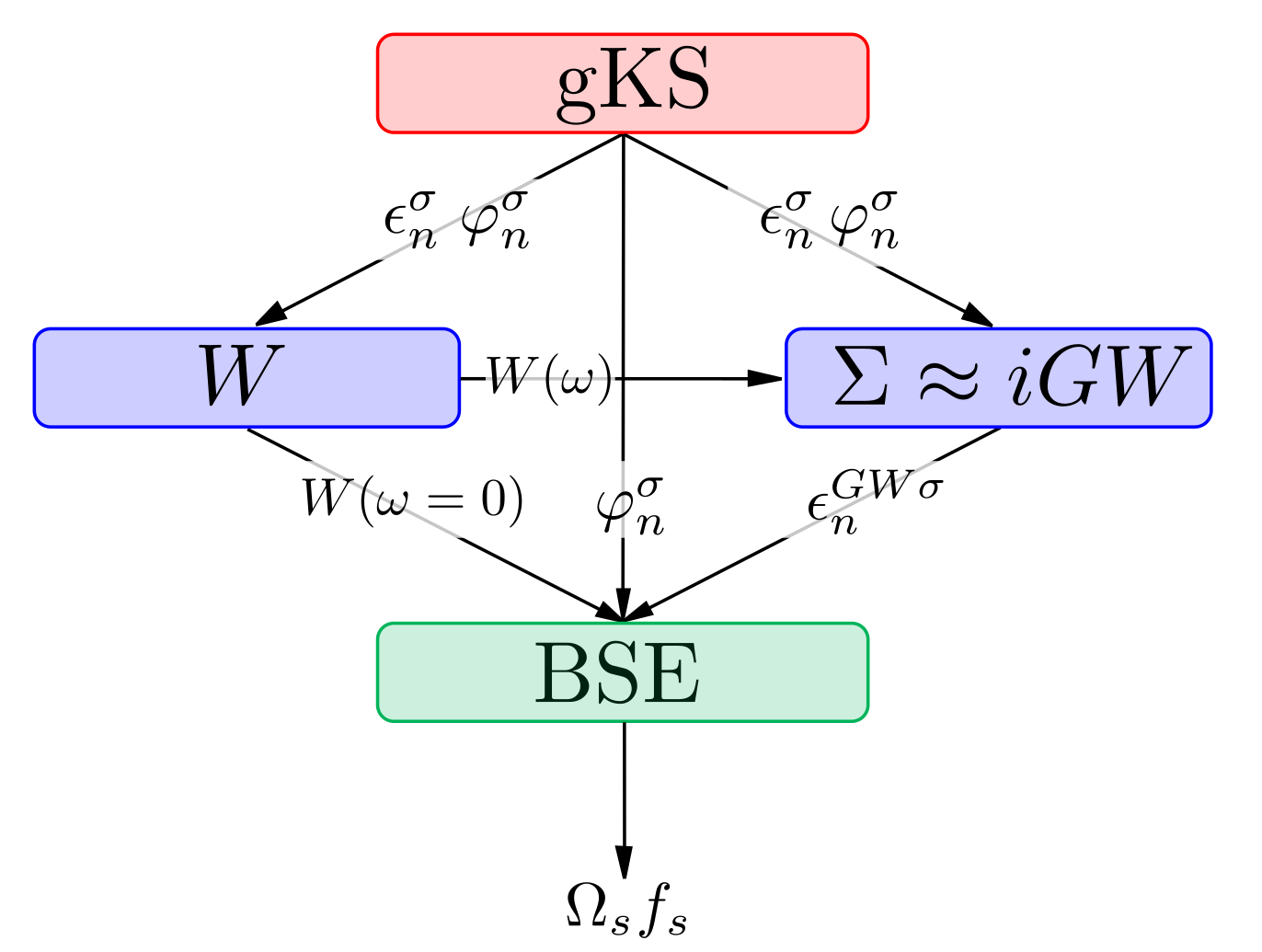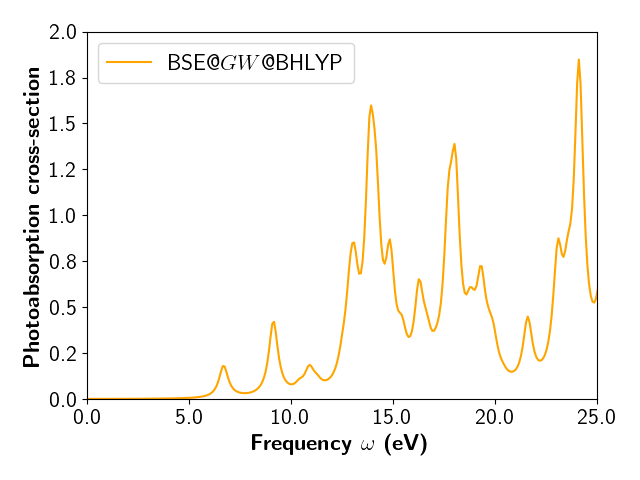Bethe-Salpeter Equation

This is the typical "one-shot" BSE workflow.
Let's how MOLGW does all this in just 2 runs.
First run
First thing first: a \(GW\) calculation for all the states:
&molgw
comment='H2O GW for all the states'
scf='BHLYP'
basis='aug-cc-pVTZ'
auxil_basis='aug-cc-pVTZ-RI'
postscf='G0W0'
frozencore='yes'
natom=3
/
O 0.000000 0.000000 0.119262
H 0.000000 0.763239 -0.477047
H 0.000000 -0.763239 -0.477047
This produces the ENERGY_QP file that will be read in the next BSE run.
Second run
The BSE diagonalization itself:
&molgw
comment='H2O BSE'
scf='BHLYP'
read_restart='yes' ! read the RESTART file so to skip the DFT part
! just to save time
basis='aug-cc-pVTZ'
auxil_basis='aug-cc-pVTZ-RI'
postscf='bse'
frozencore='yes'
eta=0.01 ! Broadening of 0.27 eV for the optical spectrum
natom=3
/
O 0.000000 0.000000 0.119262
H 0.000000 0.763239 -0.477047
H 0.000000 -0.763239 -0.477047
In the output, we obtain a list of optical excitations with their energies and their oscillator strengths:
Calculate the optical spectrum
Excitation energies (eV) Oscil. strengths [Symmetry]
Exc. 0001 : 6.70459787 0.03810771 1(A2, B1 or App)
5 -> 6 -0.61869
5 -> 8 0.27268
5 -> 10 0.17432
5 -> 18 0.10570
Exc. 0002 : 8.46893511 0.00000000 1(A2, B1 or App)
5 -> 7 0.56126
5 -> 11 0.38831
5 -> 12 0.12294
5 -> 19 0.13325
Exc. 0003 : 9.14756408 0.08897298 1(A1, B2 or Ap )
4 -> 6 -0.62009
4 -> 8 0.23204
4 -> 10 0.19474
5 -> 9 -0.10885
Exc. 0004 : 10.42700059 0.00803746 1(A2, B1 or App)
5 -> 6 0.16101
5 -> 8 0.55075
5 -> 10 -0.36243
5 -> 16 0.17142
A file named photoabsorption_cross_section.dat is produced.
It contains the photoabsorption cross-section tensor, often written \(\alpha_{xy}(\omega)\).
Let us plot the second column that contains the Trace of the tensor.
